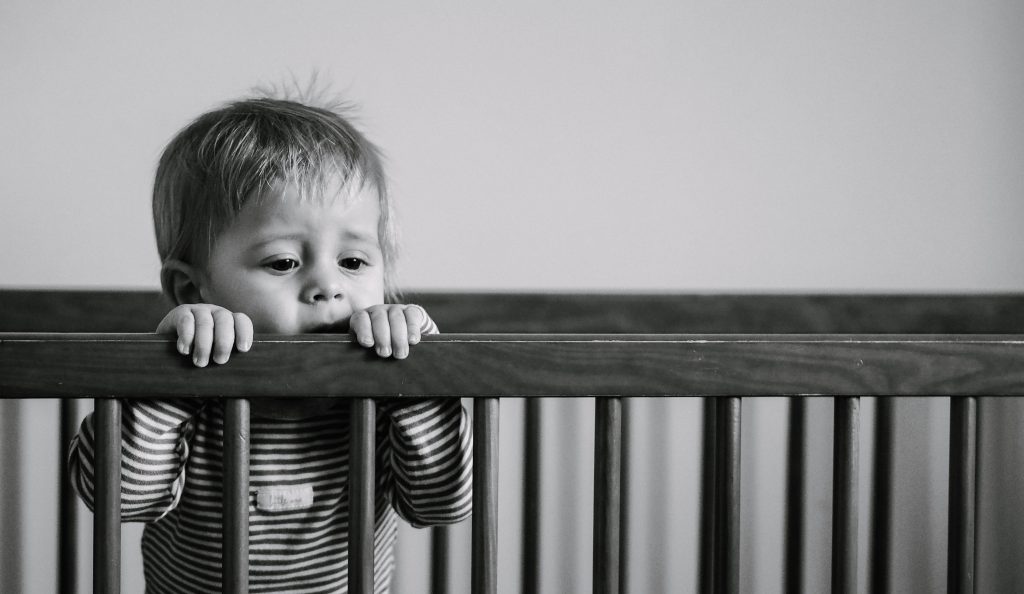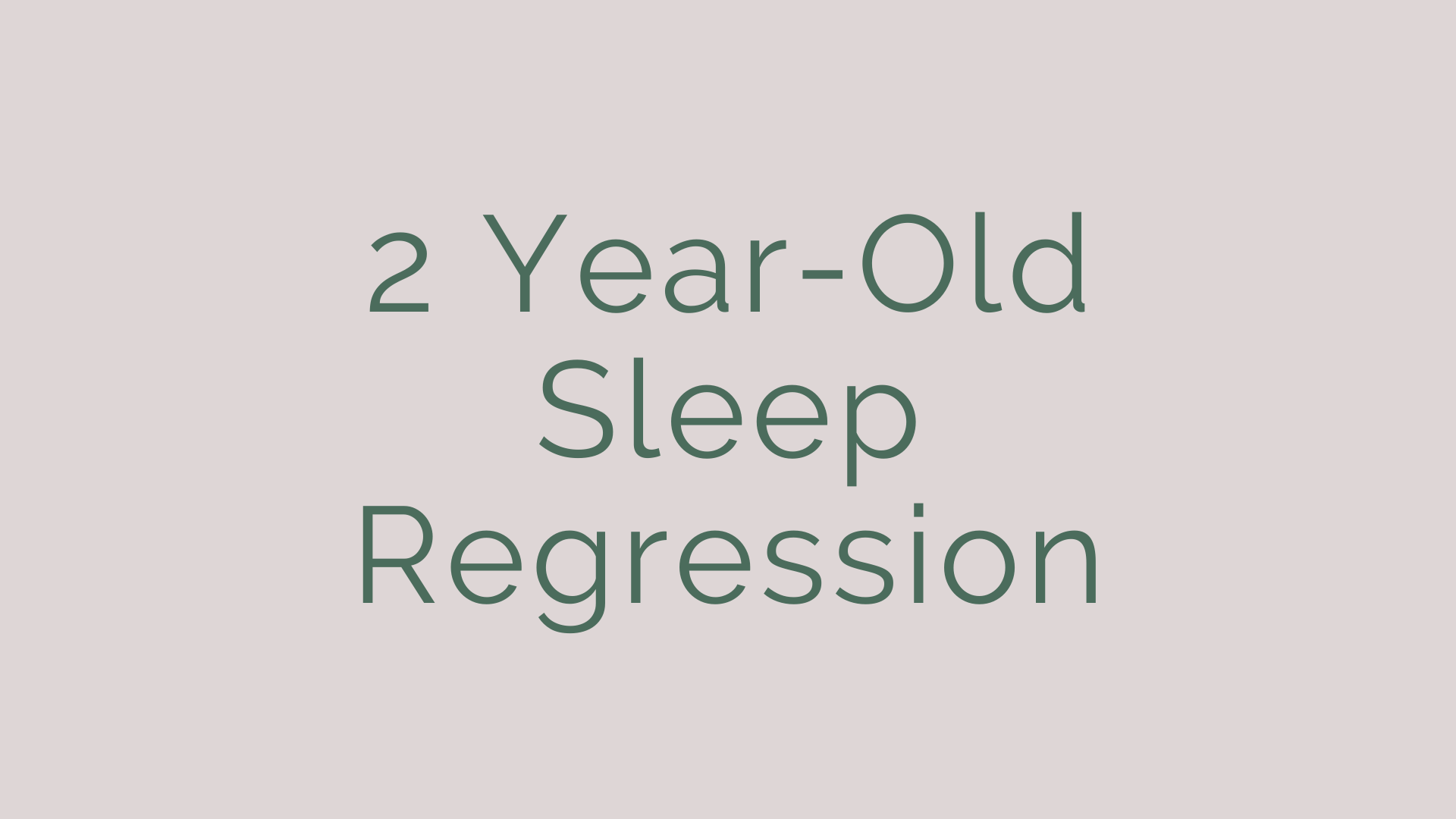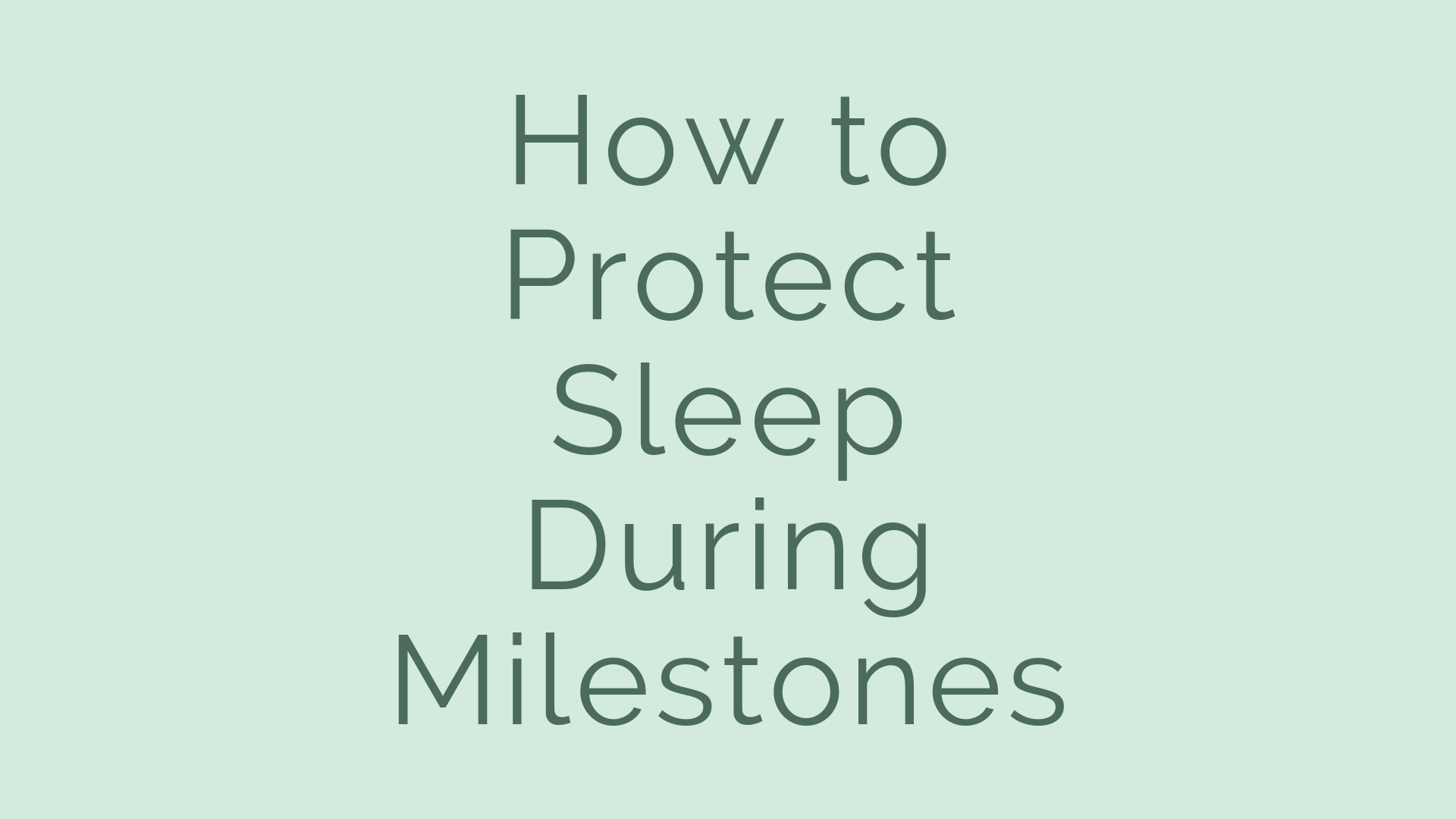Even though infants have their share of sleep issues to work through, toddler sleep issues are nothing to balk at. While toddler sleep issues present themselves in different ways than infant sleep issues do, they are often (but not always) rooted in the same predicament. What? A child’s inability to fall asleep unassisted. Here I’ll cover the most frequent toddler sleep issues, and what you can do to remedy them.
#Toddler Nap Problems
When families come to me with toddler sleep struggles, it is almost always one of two issues…
1) Their child either takes too long to fall asleep (thus putting the start and end time of the nap quite late),
2) or if their toddler sleeps at all, it interferes with being able to fall asleep at bedtime.
If you find that your child struggles to fall asleep quickly for their nap, it may be because they are waking too late in the morning to be sufficiently tired for their nap.
How to Fix Them
To remedy this problem, you can either:
1) wake your kiddo up earlier in the morning (30 minutes should suffice),
2) or you can start their nap about 15-30 minutes later.
3) Alternatively, you could keep their morning wake up time the same, start their nap 30 minutes later, and move bedtime about 30-45 minutes later.
4) Finally, you could keep morning wake time the same, move nap start time later, but cut your child’s nap short by about 30-45 minutes in order to protect bedtime.
I know there’s a lot of alternatives here, but there are also many unique situations in people’s lives. What if you find your child’s nap (of any length) is interrupting their ability to fall asleep at night? This is likely a sign they may need to stop having regular naps all together.
When to Lose the Nap
I would strongly caution against allowing your child to stop attempting a daily nap prior to the age of 3 years, but in some cases it becomes very obvious that naps of any length produce huge sleep issues. For example, I’ve had 2.5 year olds who willingly nap each day, but are then unable to fall asleep before 11:00 pm each night. Even when they are left completely alone in their crib with no interaction from Mom and Dad for hours prior to falling asleep.
If you find yourself in this category, begin by attempting a nap only every third day. Allow short snoozes (20 minutes or less) to occur in the car here and there as well. If your child does occasionally sleep in the car, make certain this sleep ends no later than 3:00 pm. If your child is known to fall asleep in the car in the later afternoon, avoid being in the car after 3 pm on “no-nap days.” And if you do have to drive, plan to have your child eat a snack, or attempt to engage them in some other way to keep them awake.
Toddler Waking Through the Night
These types of sleep issues are usually rooted in an inability to fall asleep unassisted. Thankfully, there is a relatively easy and straightforward method to remedy this issue found in my book.
As an overview, you want to create a system for your child in which they “check off” all the things they need to do before bedtime. (This way they are not asking for water or to go potty once they’re in bed for the night.) Then, once they are in bed for the night, they have a certain number of chances to stay in bed before the privilege of being able to leave their room freely goes away. Generally speaking, toddler sleep issues resolve within 1-3 days if parents are able to be hyper-consistent in implementing the toddler sleep training guidelines.
Toddler Waking Too Early
If you find your little one waking too early, first try to implement the use of a toddler sleep clock. (To see which sleep clock is my favorite check out this blog post!) For many easygoing kids, explaining to them that they must stay in bed until “the light turns green” on their clock is sufficient to dealing with this issue. If you find your child (like one of mine) is simply not interested in following that established guideline, refer to the training methods in the above mentioned book. This will help them learn that they must stay in their room until Mom and Dad deem it is time to start the day.
When to Transition To A Toddler Bed
There are a few things to keep in mind when deciding whether or not to transition your toddler from a crib to a bed. First off, I’ve noticed many of my clients anxiously anticipating this transition, and wanting to make the change sooner rather than later. This is a terrible idea. You should delay transitioning to a bed as long as you possibly can. Unless your child is able to climb out of a crib, I would not transition them until they are close to the age of 4.
Nighttime Potty Training?
I would also suggest not potty training at night (and using pull ups instead) until you are confident your child is able to get up, use the bathroom, and get back to bed without assistance. (And also be old enough not to get distracted by playing, etc, on the way back to bed.) If your want your child to be able to go pee overnight, I’d institute a “ticket” system where they receive one (or two, if needed) tickets at bedtime each night.
If they need to use the restroom anytime between bedtime and the morning, they can call to you and give you their ticket. Then use the bathroom, and go back to bed. If they abuse this system, and call for you without needing to pee, then they will use their ticket and need to remain in their crib/bed until the morning. I would suggest still using a Pull-Up just in case they have an accident overnight (especially once they’ve used their ticket).
How to Transition to a Toddler Bed
If you do find yourself needing to transition out of the crib, make absolutely certain your child’s bedroom is TOTALLY childproofed. Meaning that there is nothing in their room that could harm them. Then…
1) put up their bed,
2) a toddler clock (here’s my favorite one),
3) hand them their potty ticket,
4) tell them you love them,
5) tell them to stay in bed until the “light turns green,” and that you’ll see them in the morning.
Also, and this is key, I would add a toddler door knob cover to the inside of their door. I totally get that people will think this is locking their kid in a room, but I can assure you this is no different than using a crib.
The Trouble With Leaving Their Beds…
The major issue kids have when going from a crib to a bed is that they are able to leave their bedroom at will. (This is why I implore you not to make the transition unless you have to/they are old enough!) Once they have this freedom, it becomes necessary to sleep train your child all over again. (If you find yourself in this situation, read my book for a great toddler training method.) Once you put them to bed, I would not interact with them again unless there is an emergency. Usually this resolves any sleep issues within just a few nights.
Something to also remember is that using this tactic (door knob cover on the door) is usually not even necessary if you wait long enough to transition. Most four year olds are old enough to be obedient to the expectation to stay in their room until the light on their toddler clock turns green without even needing to have a their door closed.
Toddler Climbing Out Of Crib
I left this one for last because it is an extremely common issue that can be very challenging to deal with. First and foremost, if you choose to attempt anything to physically prevent your child from climbing out of their crib, you must first discuss this issue with, and get permission from your pediatrician.
If you happen to have a crib that has a lower front side and a taller back side (like a sleigh crib), turn the lower slats to the wall and make the higher slats face the room. This may prevent your child from being able to get up and out of the crib. Additionally, you can put your child in a sleep sack. (Even if they really dislike them – with time I can assure you they will become accustomed to using them.) The extra fabric of the sleep sack may encumber their legs enough that they cannot climb out.
Finally, consider purchasing this Travel Simple Playard from Ingenuity as it is very, very deep and may prevent some toddlers from being able to climb out.
Toddler sleep issues can be very distressing, but often with a little forethought and planning, nearly all issues can be remedied with consistency and time.






We had a problem with exactly the second point – “Wanting parents to stay in room at bedtime”. Out child wasn’t used to our absence while falling asleep. However, we had luck because we found a fantastic short book about sleeping lessons for a child. Susan Urban wrote it and it’s great.
That’s awesome Katrina! 🙂
Hi Natalie! I purchased your book and I am on day 8, my toddler is 34 months, and he is still crying when we leave and we have to lock the door every time. He falls asleep still staring through the bottom of the door and wakes up at least once in the night after he falls asleep for a couple hours. Please help!
Hi Stephanie!! Are you training for naps at the same time? And are you interacting with him overnight?
Thanks for replying! He stopped napping a couple months ago so he doesn’t nap anymore just quiet time. There is no interaction with him overnight. I’ve done the clock, and the chart too.
It truly then is a matter of sticking with it, and I’d suggest going to three post its, then after 2-3 nights, two posts its, then a few nights later just one post it. Hang in there and don’t give up!!
My 27 month old just went from me being able to wave to her and walk out the door to protesting I stay both nap and night. She will settle at night after maybe 30 (no checks) mins but will cry for an hour at naps (to which I’ve either gotten her or stayed with her til she fell asleep). Should I try to do checks for naps? If I open the door she just yells stay and then cried harder when I leave (which is why I did no checks at bedtime)
The problem is persisting because of staying with her for naps. I’d put her down for nap, leave, and let her fall asleep on her own <3
Hello Natalie,
I have a 2.5 year old very stubborn little boy. We just started sleep training and he turns the lights on himself. How do I keep him from flipping the lights on? I tried tape but he figured out how to rip it off.
I would try a cover like this.
https://www.amazon.com/Child-Proof-Light-Switch-Guard/dp/B00IOUD186/ref=asc_df_B00IOUD186/?tag=hyprod-20&linkCode=df0&hvadid=198090943423&hvpos=1o3&hvnetw=g&hvrand=12241103832612542853&hvpone=&hvptwo=&hvqmt=&hvdev=c&hvdvcmdl=&hvlocint=&hvlocphy=9061080&hvtargid=pla-393589937178&psc=1
or
https://www.amazon.com/Child-Switch-Decora-Rocker-Switches/dp/B00IOUJBM6/ref=asc_df_B00IOUJBM6/?tag=hyprod-20&linkCode=df0&hvadid=241946892871&hvpos=1o1&hvnetw=g&hvrand=17196483533323167039&hvpone=&hvptwo=&hvqmt=&hvdev=c&hvdvcmdl=&hvlocint=&hvlocphy=9061080&hvtargid=pla-622486145468&psc=1
Hi Natalie!
What would you advice to do if I am re sleeptraining my 19 month old after our vacations, but when I put him down for his single nap, he cries for longer than an hour. After an hour and a half I go for him and take him out. Should I just keep skip his nap if he cries for an hour or more?
Greetings from Mexico!
Hi Dina,
This might be something I’d need to dive a bit deeper on. I’d suggest checking out the online BST course. If you choose the +Support program, I’d be able to personally coach you through what’s going on.
Natalie
http://www.babysleeptrainer.com/purchase/
Hi Natalie,
I purchased your book when my toddler was 9months old and we were successful with the sleep training method that you suggested. Thank you for the sleep that we had! My son is now 15 months old and I can’t figure out what is happening with his sleep. It stared a couple of weeks ago when he woke up in the middle of the night crying at 4am and didn’t go back to sleep. Now he’s been waking up for his naps too. He would only nap for 45min-1 1/2 and I would usually wait about 10mins before I take him out of his crib but he wouldn’t go back to sleep. I also notice that he’s been waking up an hour earlier and would refuse to sleep at night. He would try to stay awake and hold on to the side of his crib and cry ( on and off ) for 1-1 1/2 hours. I can see him getting tired but he just won’t let go. I don’t know what to do and I’m not sure if I’m missing anything. We’ve never encountered anything close to this since he was sleep trained. Thank you so much for any advice that you can give.
Hi mama! I think he’s going through this, just a little late.
https://www.babysleeptrainer.com/10-12-month-sleep-regression-and-why-its-not-time-to-transition-to-1-nap/
Hi Natalie,
My 2 year old won’t nap! We haven’t changed his routine at all. Lunch at 1130/12 then we go upstairs, I read to him for 30 min then do the white noise while carrying him in a dark room for a few minutes and then put him down. What we thought was keeping him from napping was he was “saving” going poop until we put him down for a nap because far too often this week on christmas break he’s waited to go poop after we put him down. Today he did his two poops before nap time and now is still not napping. It’s been going on like this for the last 3-4 weeks or so (the first few weeks he wouldn’t nap for us over the weekend and now this past week he’s been home for Christmas break and hasn’t napped at all for us this week). He’s been sleeping well at daycare but she also helps him to fall asleep with rubbing his back on a cot. Room isn’t very dark but he will sleep usually 2 hrs. He gets very cranky the rest of the day when he doesn’t nap. We’ve been putting him down at 630 (usually his bedtime is 715) and he’s out like a light. I am trying to stick it out and stay consistent. What else do I do?!?!
Hi Mary,
I believe this article will describe what’s happening:
https://www.babysleeptrainer.com/2-year-old-sleep-regression/
Hang in there!!
Hi Natalie!
What would you advice to do if I am re sleeptraining my 19 month old after our vacations, but when I put him down for his single nap, he cries for longer than an hour and won’t sleep. After an hour and a half I go for him and take him out. We are on day 3 of this and no nap has happened. I put him down at 1:30 pm for his nap. He wakes up at 6:30 am in the morning but I go for him at 7 am.
Should I just skip his nap if he cries for an hour or more?
Thank you for your help 🙂
Greetings from Mexico!
Hey Natalie,
I’m curious about more transitions as kids age. I hear you on keep naps until age 3 and keep in crib until age 4.
How about when to quit blackout shades? should there be natural light in the room when kids are waiting for their green light to turn on? or should we give them access to turn a light on themselves – even if they turn it on at 5am?
When to give up or adjust the sound machine?
When can we be more flexible with bedtimes? When can car naps be okay?
We’ve been very regimented with our daughter’s sleep and curious when we’ll comfortably see our little one have sleep experiences like I see others doing – such as falling asleep in the middle of an active day on vacation? will she ever pass out on the couch while staying up late playing games with cousins? when will we start keeping her up late to do evening holiday activities? What age will she be when we can let go of her sleep hygiene (within reason) and not see consequences? 3? 4? 7?
Still really curious to get your insight in this question!
Hi Ashley,
How about when to quit blackout shades? should there be natural light in the room when kids are waiting for their green light to turn on? or should we give them access to turn a light on themselves – even if they turn it on at 5am?
Nope, never give access to light until elementary school. I still have black out shades and wear eye covers. Light filtering through your eyelids while you’re sleeping is basically not very good for you, It’s not the end of the world, but the healthiest sleep occurs when there’s no light because light (especially sunlight) tells the brain it’s time to wake up and shortens sleep duration
When to give up or adjust the sound machine?
Hopefully never? Both of my kids basically just asserted themselves around 10/11 and said they “didn’t need it anymore,” though both of their sleep suffered as a result.
When can we be more flexible with bedtimes? When can car naps be okay?
I’d stick with being consistent until elementary school.
We’ve been very regimented with our daughter’s sleep and curious when we’ll comfortably see our little one have sleep experiences like I see others doing – such as falling asleep in the middle of an active day on vacation? will she ever pass out on the couch while staying up late playing games with cousins?
I mean, she could do that now, but then the rest of her sleep would probably not be as good as it is now. Totally your choice on what you want to prioritize.
when will we start keeping her up late to do evening holiday activities? What age will she be when we can let go of her sleep hygiene (within reason) and not see consequences? 3? 4? 7?
I’d say elementary school.
Natalie